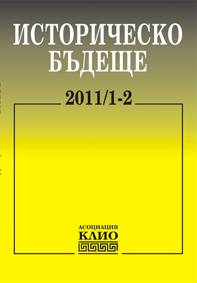Езикът на плътта: естетика на тялото и сексуалност в османското общество (XV–XIX век)
The Language of Lust: Body Aesthetics and Sexuality in Ottoman Society (15th–19th C)
Author(s): Orlin SabevSubject(s): History
Published by: Асоциация Клио
Keywords: Ottoman Empire; sexuality; aesthetic ideal; human body
Summary/Abstract: The present study deals with the Ottoman concepts of human physiology and sexuality, as well as with the Ottoman aesthetic ideal of the human body. Sanctioned and unsanctioned sexual behaviors and their textual and visual representations are taken into consideration. The study is based mainly on published primary and secondary sources, as well as two unpublished late 18th century Ottoman Turkish documents. Their transliteration and translation into Bulgarian are appended. It is pointed out that the Ottoman concepts of human physiology and sexuality were similar to the Antique concepts that had been influential in Europe well into the 18th century. Ottoman and European aesthetic ideals of the human body, on the other hand, were quite contrary. However, throughout the 19th century both the Ottoman concepts of human physiology and sexuality and aesthetic ideals shifted significantly under European influence. The study concludes that the history of the human body and sexuality in a wider European or a narrow Ottoman context shows that although the language of lust changed its codes and messages in the course of time, its nature and designation remained the same – it represents the innate desire to attract the attention of a wanted and potential sexual partner for the sake of reproduction or in order just to experience lustful delight.
Journal: Историческо бъдеще
- Issue Year: 2011
- Issue No: 1-2
- Page Range: 192-243
- Page Count: 52
- Language: Bulgarian
- Content File-PDF

